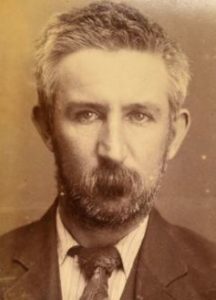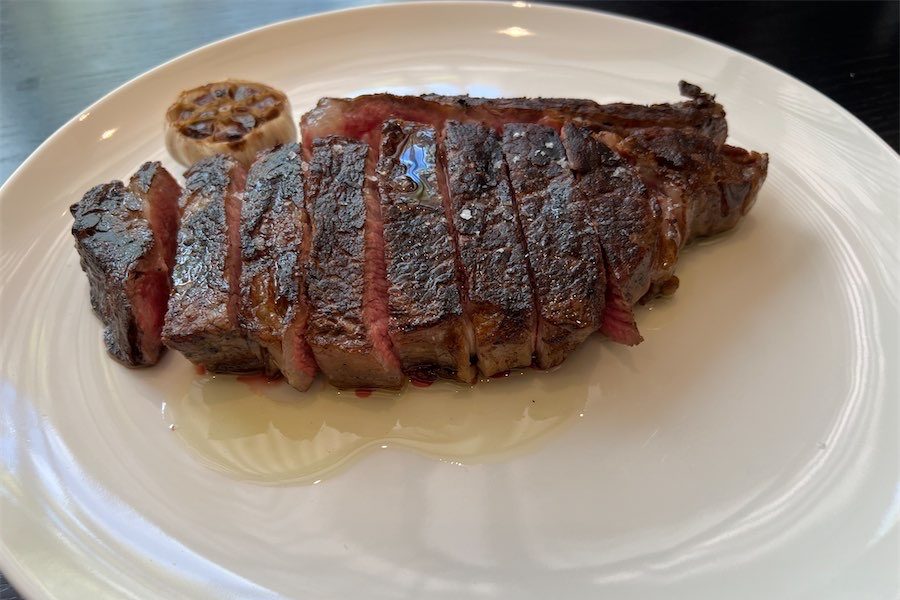Local historian and “Yesterdays” columnist NICHOLE OVERALL looks at three different murders from the district’s past…
IT was kids frolicking in the Queanbeyan River who made the gruesome discovery.

In its muddied bed, a skull, the left side caved in.
Early March of 1846; Queanbeyan was a “village” less than a decade old while almost three-quarters of a century was to pass before a foundation stone to announce Canberra’s “arrival” would be revealed with great ceremony in 1913.
What may well be the oldest unsolved crime in “Capital Country” since Europeans first laid eyes on the region in 1820, the attached body “was so decomposed that neither sex nor colour could be ascertained until a medical examination was made”.
Thereafter, the most that could be confirmed was that the forever unidentified victim was thought to be an adult male in his 30s and “about five feet six high”. He was naked and had apparently been beaten with “some blunt instrument”.
The official inquest verdict: “The deceased had been murdered and thrown into the river to avoid the identity, and the clothes burned”.
The who and why of the matter was similarly never resolved.
POLICING in Queanbeyan had commenced in 1836 with the appointment of the district’s first police magistrate, Capt Alured “Iron Man” Faunce.
Despite the fact the area had a population of only a few hundred, a need for a shorter and closer arm of the law was a growing concern with sly-grog operations, “cattle duffing” and bushranging activities on the rise.
John Tennant, of Mount Tennent fame (yes, the spellings are different), the “Bushranger of Bungendore” William Westwood, Braidwood’s notorious Clarke Brothers and the man said to be the “big daddy” of them all, Frank Gardiner, who’s believed to have led Ben Hall astray, roamed the Limestone Plains and beyond between the mid-1820s and the late-1860s.
The cosmopolitan Capt Faunce and the various constables he appointed and who came after settled things down, but while not as lawless as it may have been, still many an act of nefariousness went on.
One of the most difficult to contemplate, involving virtually the district’s “First Family”, would literally become a skeleton in the region’s closet.
By the furthest western fenceline of the old Queanbeyan Riverside Cemetery, opened in the same year that the unidentified corpse was found embedded in the local waterway, a sandstone monument stands alone.
About mid-waist height with an arched top, its only feature is a handful of vaguely ominous words: “In loving memory of our dear sister Susie, who was cut off suddenly, 23rd August 1903, aged 32 years. Erected by your sorrowing brothers and sisters. Peace Perfect Peace”.
For years many thought it may potentially belong to a victim of suicide, more details seemingly unknown and its lonely position suggestive of historic practices in this regard.
Anything but, Susie was Susan Hazelwood Gale, mother of four and wife of Charles; he the seventh child of Loanna and John Gale – the man who’d be declared the “Father of Canberra” for his role in seeing the capital located next door to the town he’d made home in the 1850s.
Having created “The Queanbeyan Age” in 1860, after 50 years in the newspaper business, John Gale retired from his position as editor of “The Queanbeyan Observer”. The town’s third paper, it was then the holding of his eldest daughter, Annie Fallick. Her younger brother Charles took his father’s well-worn seat.
The life paths of the two Gale men diverged in a significant respect: whereas the patriarch was a fervent teetotaller and advocate for the temperance movement against alcohol, Charles was more than partial to the “devil drink”.
Only a matter of months after securing his new job, on a winter’s Sunday evening, having spent the better part of the day at the Royal Hotel, Charles returned home to nearby Crawford Street.
Met by his wife of 13 years with their new-born baby cradled in her arms, a quarrel about money ensued, according to two of their other children present. In a matter of moments, a facially-disfigured Susie would be found by neighbours sprawled in front of the fireplace, still clutching little May.

Charles stood nearby, a smoking double-barrel shotgun now pointed at his own head.
Saved from self-harm, he’d incredulously sob to police he had no recollection of what he’d done.
The judge wouldn’t hear of manslaughter, “an accident” or “temporary insanity”; “it was murder or nothing”.
Pronounced guilty and sentenced to hang, the press of the day reported: “Accused’s father then shook hands with his son, who was deeply affected”.
Charles Gale would again be reprieved with a downgrade to 20 years. Serving at His Majesty’s Pleasure in Goulburn, following an early 1914 release, he’d move to North Queensland, taking up a position as a tutor, dying a year later.
His children would never see or hear from their father again. Raised with other local families, the scandal largely withered from public view as did the knowledge of their mother and her story – until a 2001 book by historian Susan Withycombe flung open that closet door.
TEN years after Charles Gale’s terrible act of uxoricide, Canberra officially came into being.
Initially Queanbeyan-based policemen were responsible for the new Federal Capital Territory. With the late-1926 establishment of a police station at Acton, NSW Sergeant Third Class Philip J Cook became the first officer-in-charge.
In 1927, he’d be upgraded to Sergeant First Class and “head up Canberra’s first local police force” – one of his most significant investigations, the first murder ever to be tried in the capital in 1932.
And there begins a tale for another column.
More of Nichole’s investigations into historical crimes and mysteries of the Canberra region at capitalcrimefiles.com.au
Who can be trusted?
In a world of spin and confusion, there’s never been a more important time to support independent journalism in Canberra.
If you trust our work online and want to enforce the power of independent voices, I invite you to make a small contribution.
Every dollar of support is invested back into our journalism to help keep citynews.com.au strong and free.
Thank you,
Ian Meikle, editor




Leave a Reply